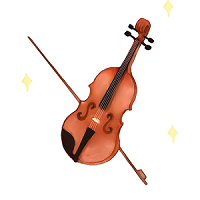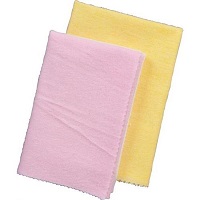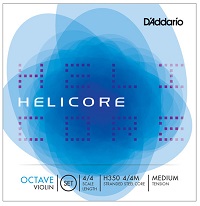
General Information
The best advice that I can give for obtaining a violin, or viola, is that you generally get what you pay for. There are bargains out there, but they are rare. If you think that it is too good to be true, it probably is. I have had many students come to me with a violin that they bought off the internet that was completely unplayable. These were the rule, not the exception. This includes eBay, Craigslist, Amazon, and some web suppliers. Sadly, the amount of work that it would take to make these playable was more than the cost to buy it. Sad, but true. I am not saying that the sellers were trying to scam the buyer, but often they know nothing about the violin. It doesn't cost much more to get an instrument that is easier to play. That will make learning so much easier and pleasurable.
There are good suggestions for reliable places to purchase in the website tabs.
If you are a student of mine I will be glad to help you figure out what the best options are for you and give youi shopping suggestions.

Checklist
You can use this list when you go to rent an instrument to assure that you get everything that that you need to start playing your instrument. The shop does not always know, or remember, exactly what you will need for your specific situation. Please go to a violin shop, not a general music shop.
You will need:
- Instrument - violin/viola/cello/bass. Make sure it has fine tuners, except bass.
- Case
- Bow - For adults, make sure it is made of wood.
- Rosin - This should be included. We will talk about how to use it.
- Shoulder Rest - This is not included and will probably have to be purchased separately. The cost for adults is about $40. Only needed for violin and viola.
Adults, if they have multiple level of violins for rental consider the better one if possible. It will make playing easier. Children, the shop will size the instrument. It will probably be fine, but if I disagree they will gladly exchange. Student instruments(not bass) have four fine tuners on the tail piece. This will make it easier for you to tune it. Some of the higher end rental instruments do not have these. Ask for them to be installed, or rent another instrument.
Shoulder Rests
- Adults - You definitely need one. Kun or Everest make one that works well for most students. They make a collapsible model that usually fits in the outside of the rental cases. If it doesn't fit you might be able to negotiate for the different case that it does fit in. If not, you will have to carry it separately. I can give you some idea to make this easier.
- Children - Children younger than about 3rd grade can get by with foam, which I can provide, but a standard shoulder rest may make things easier. Older children need a more standard shoulder rest. A standard shoulder rest makes it easier to hold the violin up. Kun and Everest makes shoulder rest for multiple sizes of violin. Some are good for two sizes.

Children
Most children do not use a full sized instrument before 7th or 8th grade, some later. Instrument size is based on the size of the student, mostly arm length, not on age. The general rule is that a slightly too small instrument is better than a slightly too large one. This is because a larger instrument will be heavier and more difficult to hold. Once past middle school look at the adult section.
Rental
Rentals can be arranged through local violin and general music shops. They start at somewhere around $15/month. I suggest a violin shop. A credit for some of the rental time is often offered toward a later purchase.
Purchase
Most parents choose to purchase an instrument for a child because it is more cost effective than to rent. The cost of a small instrument is often equaled by a few months of rental. They start at about $125 for an outfit. Two experienced and reliable mail order outlets are Shar Music and Southwest Strings. There is also the possibility of purchasing an instrument at a violin shop or local music store. Some places offer a trade-up policy or credit as the student needs the next size. The time between instruments is on average one year, but depends completely on the growth rate of the child.

Adults
Rental
If you do not have an instrument already I strongly recommend renting. Rentals are about $40 per month for an outfit valued near $1000. An outfit includes a violin, a bow and a case. I suggest this for two reasons.
- You don’t have to invest in an instrument while you try out lessons to see if playing is for you. Once you get to the end of Book I you will have enough experience to help pick out an instrument to purchase for yourself.
- You can start to learn on an instrument of better quality. Better instruments are easier to play and sound better. Your learning experience will be better and you are likely to make progress more quickly. Most violin shops will offer some sort of program to apply all, or part of, the rental to a first purchase. You should definitely choose a violin shop, not a general music store. General music stores do not stock high quality instruments. They are geared toward a younger, less responsible, clientele.
I can suggest a store that I know is reputable and honest. They are not all this way. My feeling is that you should have your rental credit in a place that you might want to use it.
Purchase
If you are starting or continuing lessons and you already have an instrument, that is great. You can definitely start lessons with that. If I find things about the instrument that are making things very difficult for you, I will tell you. Some things can be worked around and others not.
If you have been renting you may want to consider buying an instrument sometime around the end of Book I. At that point you will have enough skill to go to a violin shop and try instruments. Each one has its own voice and feel. It is amazing the first time.

Rosin
Like many things about the violin the choice of rosin is very personal. It would be possible to give two players the exact same instrument and bow and they could prefer a very different rosin. Once you are approaching the intermediate level you may want to experiment with different types of rosin and see how they react with your bow and violin. Until that time most any mid-priced rosin will serve you well. Some examples are: Hill, Dominant, Pirastro or Thomastik.
If you are a bass player two of the best options are Kolstein All Weather and Pops. They are softer that the rosin for other strings.
How often you need to rosin the bow is a common question. Looking at the violin/viola/cello after you have played can give you a good indication. There should be rosin on the strings and perhaps a very light dusting of rosin on the belly (under the strings). If there is no rosin on the violin you probably need more. If there is a heavy deposit on the belly you just wasted some rosin and don’t need to apply it so heavily or so often. Very little on the strings tell you that you need to apply it more often. Another good sign that you need more rosin is if the bow slips across the strings. This is the primary sign for bass. The rosin is meant to grip the string and produce sound. A bow with little, or no, rosin produces little or no sound.

Cleaning Your Instrument
Rosin from the bow can build up on the violin. As you play, it transfers from the bow to the strings. It should be cleaned with a soft cloth after each playing session. Cleaning clothes can be purchased, but nice double sided flannel from the fabric store is much cheaper. These can be washed and reused. Gently wipe the rosin from the belly of the violin (under the strings), the top of the fingerboard and the strings. This should be done each time you are finished playing. The rosin should also be wiped from the stick of the bow, not the hair. If rosin builds up it can be removed by a player. For minor build up there are cleaning products that are meant specifically for strings. Do not use furniture polish or other wood cleaning products. The varnish is delicate and not the same as what they put on furniture. For heavy build up the cleaning is best left to a professional at a violin shop.

Strings
Strings are one of the topics that are often debated at all levels of the string community. There are a few reasons that contribute to this. The first is that there are many choices of strings. The second is that even the same string can sound differently on two different instruments. Lastly, the sound that a player wants from their instrument is a very personal thing. The two questions most often asked are:
- What strings should I use?
- How often do strings have to be changed?
Unfortunately, the answers to these questions are not exact answers, but some basic information and guidelines can help. How often strings need to be changed depend on two main criteria. These are how long they have been in installed and how much they are used. This correctly implies that they do wear out and they degrade in quality over time. Someone that plays multiple hours a day would likely change their strings at least once a year, maybe twice, in a year. Strings can last multiple years for players that use their instrument fewer hours a day. When are they too old? The player should watch for an unexpected raveling for the strings though. This most commonly happens at the ends and over the bridge, but it can happen anywhere. These become weak places where the string will break. When raveling is noticed the string should be replaced. Strings degrade in sound quality over time. This can be simply due to time and use, or it can be because the string has gone false. A false string will become very difficult, if not impossible, to get into tune and to stay in tune. With non-gut core strings they can go false very quickly. Strings are usually changed a full set at a time. This is because a new strings sound much more vibrant than old ones. They are replaced one string at a time and used before the next one is changed. Plan on playing on the new string for 30 minutes or waiting until the next day to allow time for the new string to stretch before the next string is changed. New strings will stretch for 1-6 days depending on the string type. In the beginning you will want to start with a full set of strings from the same brand. Later you might want to swap in other individual strings. The violin ‘E’ string the only exception. They can be changed twice as often as the rest of the strings. It is also common to use an ‘E’ from a different set than the rest of the strings. There is not a definite answer to the question of the type of string to use, but a few guidelines can be given. Most players use some kind of string with non-gut core. Thomastik Dominant strings were one of the first synthetic core strings to come out. They are still one of the most accepted strings for all kinds of instruments. They are a great first choice and seem to give a universal good sound. Helicore strings are one of the newer strings that seem to work well on most instruments. After this, the choice of strings is much more of an experimentation cycle. They are bought for a particular property, such as warm tone, but there are many different strings for each property. Sadly, the exact same string will sound different on each instrument. These are two articles that give more information about the different string options: